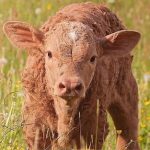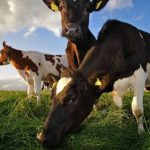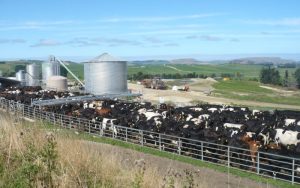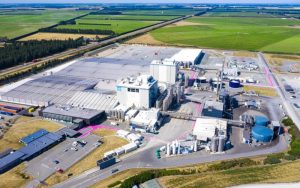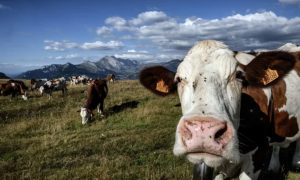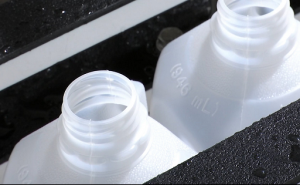
I had the privilege of visiting New Zealand with the board of Arrabawn just before Christmas. I’d barely landed in Auckland when I was made aware of the burning farming issue that’s exercising the concerns of New Zealand farmers at present.
The issue was the Government’s response to the He Waka Eka Noa (HWEN) proposals for dealing with greenhouse gases (GHGs) which were published last May.
The HWEN partnership comprised the two statutory levy bodies, Dairy NZ and New Zealand Beef and Lamb, the Federated Farmers of New Zealand (FEDS) and, most importantly, government representatives.
The partnership was established in response to the 2019 legislation to include New Zealand’s agricultural sector in the Emissions Trading System (ETS).
Farming bodies
The farming bodies had accepted the principles of carbon pricing through agreeing to a farm-based levy on carbon production as part of a wider package of measures to reduce the sector’s carbon footprint.
The proposed levy was a split-gas levy in recognition of the lower global warming impact of methane relative to nitrous oxide. Incentives were advocated to encourage mitigation and sequestration. Farmers were also to have a direct say in the determination of the levy and in the allocation of revenues from the levy.
There are a number of lessons to be learned for us in Ireland from what’s happening in New Zealand.
The most obvious one is that there’s not much point in the Government entering into a consultation process if, at its end, the Government is seen to reject the outcome of that process.
Risk
There is a risk that the Government’s response will result in a disruption of the partnership as the compromises that had to be made to secure the May document come under greater scrutiny.
So far, the partnership seems to be holding but each of the farming members have submitted their own individual responses to the Government’s October response.
At a more fundamental level, the fallout from the Government’s failure to fully embrace the HWEN partnership proposals has once again focused attention on how agriculture can or should deal with its GHG challenge.
One major difference between the New Zealand debate and ours is that in New Zealand, the discussion is very much framed in terms of the pricing of GHGs and especially methane.
In principle, at least, all of the New Zealand players accept that carbon needs to be appropriately priced to cause behavioural change. By contrast, pricing is hardly mentioned in Ireland within the agricultural sector as an appropriate response.
It is worth noting that the New Zealand government’s October response accepts the HWEN principle of a split-gas approach to pricing. However, while the split-gas approach has been accepted, farmer organisations strenuously object to the proposed targets.
The government is proposing that biogenic methane should be reduced by 10% by 2030 and by between 24% and 47% by 2050 relative to a 2017 base. It argues correctly that these targets are at variance with the science on the global warming impact of methane and proposes that methane only needs to decline by 0.3% per year up to 2050.
By contrast in Ireland we’re treating all GHGs as the same. There is no appreciation here of the fundamental difference between methane and nitrous oxide when benchmarked against their respective impacts on global warming.
Irish farmers have no incentive to offset gross agricultural emissions, unlike their New Zealand counterparts
It is also worth noting though that the first Irish Climate Change Advisory Council consistently argued for a split-gas approach. This view was repeated in the Food Vision report and again in the dairy report.
While excessive methane pricing is the main gripe that farmers have following the government’s October response, there are a number of other concerns. The HWEN partnership advocated a prominent role for the farming organisations in setting the carbon price and in agreeing how revenues should be reallocated to agriculture.
I don’t find it surprising that the Government would only accept an advisory role for farm bodies in both of these areas. It does, however, seem unduly provocative that revenues generated through the carbon tax on agricultural emissions should not be entirely recycled into the agricultural sector.
Sequestration
Another concern of New Zealand farmers is with the Government’s approach to sequestration.
The HWEN proposals emphasised the importance of encouraging any sequestration activity that could be measured, whereas the Government’s response was much more limited and confined to sequestration measures that were included only in the national inventory of GHGs.
Meanwhile in Ireland, we’ve separate carbon budgets for agricultural emissions and land use change, so Irish farmers have no incentive to offset gross agricultural emissions, unlike their New Zealand counterparts.
Furthermore, afforestation, which is being aggressively pursued in New Zealand, is very attractive at an individual farm level but is increasingly being seen to benefit the carbon inventories of those countries that are investing in New Zealand land to grow trees.
One really interesting aspect of the debate now under way in New Zealand is the role of mitigation technologies.
Many New Zealand commentators are sceptical of big technological fixes coming on stream in the short to medium term.
With the exception of protected urea, there would appear to be a high degree of pessimism on the likelihood of measures, such as feed additives or breeding strategies delivering dividends for farmers in the near term.
New Zealand farmers appreciate the distinction between a levy versus a pricing approach to carbon. A simple levy would be applied to every kilo of carbon generated on farms, whereas a price approach would only apply at the margin. The latter would be expected to impact on behaviour whereas the former would only be effective if the levy was set at a very high level.
It is possible, however, to build-in incentives to change behaviour with a levy and these were advocated in the HWEN proposals. For instance, farmers could be incentivised to reduce their emissions by adopting proven mitigation technologies or through implementing sequestration practices.
The competitiveness of our dairy industry could be at stake if we get it wrong
A pure price approach would operate through a market for carbon. And while the cap-and-trade model was rejected by the HWEN partnership, it has come back on agenda under the changed landscape.
HWEN rejected the cap-and-trade model primarily because it saw carbon credits flowing from the beef and sheep sectors to the more profitable dairy sector.
The initial allocation of credits or carbon production rights is highly problematic.
The most economically efficient allocation mechanism would be to auction credits but this would see the more prosperous farmers likely to acquire an excessive share of credits.
An alternative would be to “grandfather” credits by, for example, allocating credits to each farmer based on the average farm carbon production for different farming enterprises.
An individual farm whose credits were below average following this allocation would have to buy additional credits, and a farm whose credits exceeded the average could sell credits. But even in this situation some farmers will be financially stronger than others when it comes to the acquisition of additional credits.
We’re grappling with the same challenge in dealing with GHGs as New Zealand. A few months ago, it looked as if they were ahead of us. Now it looks like their approach is up in the air. We can learn from their travails and we need to.
The competitiveness of our dairy industry could be at stake if we get it wrong.
